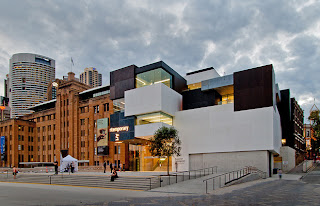San Francisco Museum of Art
I went through the list "100 museums to visit before you die" and I found a lot of museums that looked very interesting and well designed, but the one that I think will work with my exhibition is the San Francisco Museum of Modern Art (SFMOMA). SFMOMA was founded in 1935 and it was the first museum on the West Coast devoted to modern and contemporary art. From the outset, the museum has championed the most innovative and challenging art of its time, and they continue to exhibit and collect work by both modern masters and younger, less-established artists.
The SFMOMA has shown similar exhibitions to the one that I'm doing, but I also like this museum because of the way it looks from the outside and from the inside I think it goes well with the feeling of murals and big walls. Diego Rivera's The Flower Carrier is one of the highlights from the SFMOMA's collection, so that is another reason why I think my exhibition will also fit in this museum.
Museum of Contemporary Art Australia (MCA)
From the same list "100 museums to visit before you die" I found the Museum of Contemporary Art Australia (MCA) at first it caught my attention because I like the way the museum was designed the museum looks very modern and minimalistic. I was looking at the current exhibitions and I found an exhibition from Anish Kapoor an Indian-born British sculptor. This exhibition to me it seems very interesting and also very impressive, but what I really like about his work is the way he plays and uses the negative space and space in general by having sculptures inside the museum and also outside the museum drawing the viewers attention to the museum. The exhibition presents key bodies of works from the artist’s career since the early 1980s. Kapoor’s continual experimentation with materials and forms is seen across the exhibition in works which challenge conventional ideas of art and engagement, including the early vibrant pigment pieces and the void sculptures which explore negative space – openings and cavities – to distort viewers’ perceptions of space, highlighting the gap between what is known and what is seen.






No comments:
Post a Comment